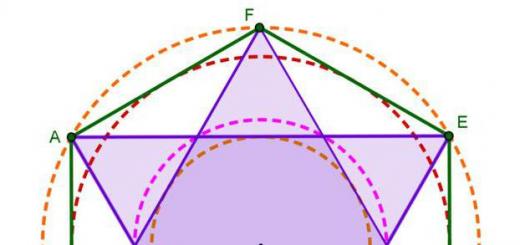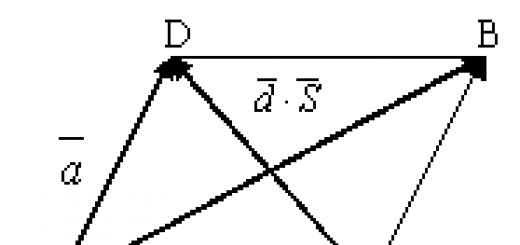Often in the process of laying or repairing the internal sewer network, problem situation. It consists in the fact that the pipeline expands and contracts linearly with temperature differences. What to do in this case? Then you can use a 110 mm sewer compensator. About what it is, this material will tell.
In fact, the compensator is a fitting. Namely, an element that serves to level the linear extensions of the sewer network during its operation.
Manufacturing materials
For the production of sewer pipes, manufacturers traditionally use:
- metal: steel and cast iron;
- molded reinforced concrete;
- asbestos cement;
- ceramics.
A few years ago, plumbers preferred to work with metal pipes. However, this material has several disadvantages:
- he is very heavy;
- installation of a metal pipeline is complex and time-consuming;
- steel sewerage rusts, and cast iron quickly overgrows with deposits.
Therefore, with the start of the production of polymer pipes, builders increasingly give preference to them. There are three types of plastic products, including sewer compensators:
- polypropylene products;
- polyethylene analogues;
- polyvinyl chloride expansion joints.
Important! The most popular polypropylene products. They make it possible to solve urgent engineering problems related to the installation and use of sewer networks.
Scope, section and design features
All materials used for arranging sewers have their own linear deformation parameters. Therefore, a plastic compensator is not suitable for all pipelines. The efficiency and demand for this fitting increases if the sewer network is walled up in floors or walls.
The compensator is mounted on a sewer pipe at the bottom of the risers, located in technical, utility, basement rooms. It gives the desired slope to the horizontal sections when unifying waste branches from different materials.
 The fitting allows compensating for deformations and failure of the network due to its linear temperature contraction/expansion.
The fitting allows compensating for deformations and failure of the network due to its linear temperature contraction/expansion.
Often, expansion joints are used to repair internal sewer systems. They make it possible to change failed sections of the pipeline without its complete dismantling.
Often the installation of a fitting is necessary when repairing a bathroom or restroom. In this case, it is used if the high-altitude differences in the floor require raising or lowering the crosspiece of the riser to create an optimal angle for dumping sewage into it.
The expansion joint made of polyethylene and polypropylene is a straight pipe section. On the one hand, it is equipped with a 110 mm connecting socket. It has a rubber o-ring.
PVC products can be corrugated, which improves their compensation characteristics. There are also products of a curved configuration, they are designed for the installation or repair of turning sections of sewer networks.
Advantages and technical characteristics of plastic expansion joints
Polypropylene expansion joints for sewer pipes are used most often. Their popularity is due to a number of advantages.
Advantages of polypropylene pipes
Features of polypropylene adapters:
- long service life: the average service life of products is 30–40 years;
- low weight: due to this, labor costs during the installation of the compensator are small;
- easy installation, similar to the assembly of the designer;
- resistance to aggressive chemicals and temperature extremes;
- the material is not subject to corrosion;
- due to the smoothness of the inner walls, deposits grow on them very slowly;
- the material is environmentally friendly, which is confirmed by hygienic certificates;
- such compensators are inexpensive.
Important! Manufacturers produce a wide range of expansion pipes with different cross-sections and shapes. This makes it possible to equip sewer networks of any design and complexity.
Technical characteristics of polypropylene products:
- total length - 28 cm;
- outer diameter of the socket - 11.5 cm;
- internal section of the socket - 11 cm;
- wall thickness - 3.2 mm;
- limit of continuous operating temperatures - +95 degrees;
- pressure in the network in which the compensator is operated - without pressure;
- color - pale gray;
- transported medium - sewage;
- warranty period of service - 24 months;
- the declared duration of operation is 50 years.
How to embed an expansion pipe?
In order for the compensator insert to be correct and of high quality, you should:
- take into account the thickness of the pipe walls;
- determine the length of the sewer network in order to calculate the level of pressure on the joints to be connected.
Important! The best option to increase the tightness of pipe connections with thick walls is to use silicone sealant. This material is elastic and therefore will not interfere with compensatory movements. Sealing network elements is also effective when the sewer is planned to be used with increased exposure to extreme temperatures.
Algorithm for inserting polyethylene and polypropylene expansion joints into the riser:
- first, a section of the pipeline is cut out with a hacksaw, to which the compensator will be connected;
- the edges of the cut are processed with a file or a large emery cloth to remove burrs;
- then silicone sealant is applied to the upper end of the riser (it is better if it is a special plumbing composition);
- after that, the compensating branch is stretched to the stop on the machined side;
- then the bottom side of the riser is covered with sealant;
- further, the corresponding end of the compensator is fixed in its socket;
- then the riser is fixed;
- after the silicone has dried, the system can be operated.
A 110 mm compensator for PVC sewerage can be mounted in the same way as polyethylene and polypropylene counterparts, that is, by pairing the elements in the socket.
Installing PVC adapters is quite easy, it does not require special training. Some tips for installing such fittings:
- it is best to cut pipes with a hacksaw with small teeth, for example, a metal saw, so there will be less burrs on the cuts;
- it is necessary to grind and seal the dry and clean sides of the elements;
- all cavities that appear must be hammered.
The compensator makes it possible to repair the sewer system without dismantling its significant sections. His plastic varieties are installed simply and quickly. You don't need to be a plumber to do this job.
Vacuum valves
A vacuum valve or sewer aerator is used in internal sewage systems to prevent unpleasant odors, harmful gases and vapors from the system from entering the room, as well as to relieve pressure in the system. Vacuum valve 110 (aerator 110) is installed on top of vertical risers in the sewerage system in attic spaces, toilets, bathrooms, etc., where an uninterrupted supply of fresh air will be ensured to the damper.
Also, a vacuum valve is used for local aeration of sinks, bidets, toilet bowls, where a large flow of waste liquid can lead to the creation of an air discharge (sucking water from the siphon water seal), in this case, as a rule, a vacuum valve 50 is used.
Stubs
Designed to close unclaimed socket connections of the sewer pipeline.
Umbrellas
Umbrella sewer ventilation is designed to protect sewer risers brought to the roof of the building.
crosses
The single-plane cross is designed to connect additional branches to the pipeline in one plane. The two-plane cross is designed to connect additional branches to the pipeline in two planes.
Double-socket couplings
The double-socket coupling is used for the installation of non-pressure sewer pipelines of the internal sewerage systems of buildings and structures for various purposes. The coupling has a two-socket design and is designed to make pipe connections on both sides, thanks to a jumper on the inner surface of the coupling.
check valve
The sewer check valve is installed at the points of entry into the general sewer system to prevent backflow Wastewater with the possibility of using forced blocking.
Elbows
Used to change the direction of pipe laying during installation. Thanks to sewer outlets you can turn the pipe in any direction. This is especially required when complex piping systems are being installed and it is necessary to go around a corner or architectural ledge.
Elbows 110 with outlet 50
It is used to create branches and bends, as well as to connect additional elements and plumbing devices of sewer communications.
Compensation pipes
Used to compensate for building tolerances.
Transitions to cast iron
It is used to transition from the socket of a polypropylene pipe to the smooth end of a cast-iron pipe. For a tight connection, a special rubber cuff is required.
Transitions eccentric
Designed to reduce the flow and connect the socket of a sewer pipe/fitting of a larger diameter with a smooth end of a pipe/fitting of a smaller diameter.
Connection to the toilet
Connections to the toilet bowl are designed to connect the toilet bowl to the sewerage system. Mainly used for horizontal connection method.
revision
It is intended for a clearing of a sewer strut.
Tees
Designed to connect to the pipeline D110, D50, D40 and D32 an additional branch at various angles
Clamps
Used to fix the elements of the system, the distance between the clamps should be: for horizontal lines - 10 diameters of the pipe being laid, for vertical lines (for risers) - 1000-2000 mm
Branch pipe PP compensating DN 110 mm sewer PVC internal one-socket sliding PP D 110 mm for internal sewerage
Ffitting part for connecting sewer pipes PVC pipes and fittings that do not have socket connections. Thrust flange in the design of the coupling provides correct installation pipes and fittings. PVC fittings provide a tight hermetic connection of sewer pipes. The sockets have a high-quality rubber seal that is resistant to aggressive media.
Compensation pipe for internal sewerage- gray polypropylene sewer fitting. It is designed for repairing the domestic sewerage network in both residential and non-residential buildings and premises.
Compensatory sewer branch pipe has a long service life (at least fifty years). The standard diameters of this fitting coincide with the standard diameters of gray sewer pipes and are 5 and 11 centimeters.
Company " Truba-Plast» offers compensating pipes PP at competitive prices in Moscow. They are used in non-pressure pipelines of internal sewerage networks of administrative, industrial and residential buildings and structures.
The main characteristics of the nozzles:
- ring stiffness - SN 4;
- diameter - 50, 110 mm;
- service life: 50 years;
- connection type: socket;
- design features: with O-rings;
- maximum temperature: 95 °C.
Products comply with domestic GOST and international technical standards. Delivery of products can be carried out in any region of Russia.
Properties and application of nozzles
Expansion pipes made of PP polypropylene are necessary to compensate for building tolerances, simplify assembly and assembly work. It is recommended to use at the bottom of risers in technical rooms. The presence of a branch pipe makes it possible to avoid deformation and destruction of pipelines, and makes it possible to remove damaged elements of the network without disassembling it.
Thanks to the socket design, the nozzles are easy to install. They are equipped with a sealing rubber ring, which ensures high tightness and reliability of the connection. Additional qualities: resistance to corrosion, aggressive environments. It can function normally both at high and low temperatures.
Often, in the process of replacing a pipeline, one has to deal with the fact that the diameter of one end of the line is 110 mm, and the cross section of the other is larger or smaller. And how to replace the sewer riser? A compensator will come in handy - an excellent transitional device, just designed to connect elements with a difference in cross section.
By definition, a compensator is a device for compensating linear extensions of a pipe system. Each material has individual indicators of linear expansion, so the compensator is not needed for every pipe line. The relevance of the element is increased if there is a sewer system hidden in a screed, a wall. In appearance, the element is a corrugated pipe, equipped on both sides with connecting flanges.
Important! The use of flanges is shown for pipes with a cross section of 63-110 mm, for pipes with a diameter of up to 63 mm, a threaded compensator is produced, as well as an element equipped with a rubber corrugated seal and a union nut.
Plastic sewer compensator is indicated for repair/replacement of PVC pipe riser without dismantling the entire system. Representing a piece of a curved shape, the compensator has the same section as the elements of the line and is inserted by cutting a piece and fusing the compensator with a blowtorch.
Advice! Compensators are mounted only on sewer structures or plumbing for hot water.
Often, the installation of an element is required to repair a bathroom or toilet room, when floor level differences require raising or lowering the cross on the riser to arrange the angle of drainage into the sewer.
Insert Features

Polypropylene elements have almost everywhere replaced the old metal sewer risers. Due to the undeniable advantages, plastic is becoming more and more in demand. However, in order to get a really high-quality tie-in result and install the compensator correctly, some simple factors must be taken into account:
- Consider the thickness of the pipe walls;
- Calculate the length of the sewer line in order to calculate the approximate pressure force on the welded (soldered) seams;
- For a pipeline with a cross section of 110 mm, only flanged pipes are used;
- If the pipes are less than 110 mm in cross section, it is most practical to use a threaded connection, and it is better to choose branch pipes for pipes PN 10, 16, mounted when installing cold water supply systems - they are denser and more durable.
Important! It is very reasonable to provide increased strength to the thick walls of pipes, for which the welded installation method is used. Welding is also indispensable if the sewer pipeline is supposed to be used in conditions of high temperature exposure.
Scheme of operation of the tie-in in a plastic riser:
- Cut a part of the pipe by processing the riser with a file to remove burrs;
- Cover the top of the pipe with sealant;
- To put on a branch pipe against the stop;
- Coat the bottom with sealant;
- fix the compensator by inserting it into the socket of the pipeline;
- connect the system and fix the riser.
And advice: to connect the pipeline, the elements of which are made of different materials, a system of fittings equipped with a polymer coupling and pipe thread is used. Now you don’t have to guess why you need a branch pipe and what to do with the PVC pipeline if it is leaky - the compensator will allow you to quickly and without much labor and time costs to repair the breakdown without disassembling the entire system.











